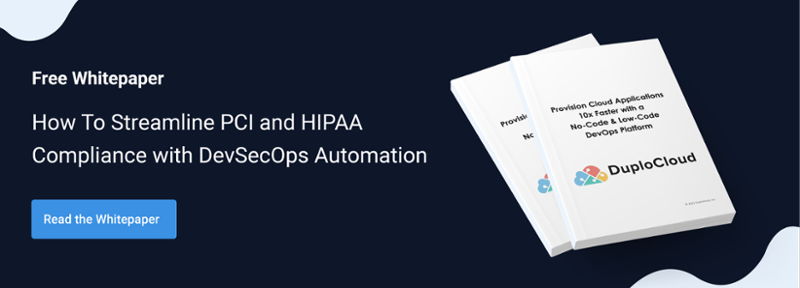Everything your business needs to measure and accelerate time to market
It’s true across markets, but perhaps nowhere more than in software: If you’re not first, you’re last. Every industry, business, or product can have its own measure of time to market, but all acknowledge the advantage that being first on the scene provides. Read on to find out more about why time to market matters and how you can optimize yours for a successful product launch.
What Is Time to Market?
Time to market (TTM) is defined as the total amount of time it takes to bring a product to the market. Time begins in the initial planning phase and continues through development, ending when the product is released.
TTM measurements change according to industry, business, or even an individual product. Some industries exclude the very beginning of development, when staffing and approval are still being pieced together. That's usually not the case at software development companies, for example, as this stage can take a long time and a lot of resources to complete and is, therefore, worth tracking.
TTM is also flexible in meaning and can be used to refer to individual features, updates, or marketing campaigns.
Why Does Time to Market Matter?
TTM is an important measure of operational health and sustainability in competitive businesses. Startups, and software startups in particular, often sink or swim based on how quickly they can get their product to market. In fact, one McKinsey study showed that the average business arriving at market six months late loses a third of its after-tax profit compared to others in the same market. Furthermore, a business could overspend by 50% on development and still see losses of only 3.5% if they reached market on time. The sooner you get your product to market, the sooner it can start generating revenue — and the more likely it is to scoop revenue from other similar products that arrive later.
Attempting to rush the TTM phase of your business can lead to a longer TTM overall as you're forced to solve the problems such a scramble creates. But there are ways to accelerate time to market while maintaining quality. DuploCloud's no-code/low-code DevOps-as-a-Service platform can speed up cloud-native app development with automated infrastructure deployment, built-in security compliance features, and more.
To learn more about the fundamentals of time to market, read What Is Time to Market and Why Is it Important for Growing Companies.
Concrete Strategies to Shorten Time to Market
Because time to market is so important, startups and SMBs are always on the hunt for ways to shorten the gap between development and release. Here are some proven strategies that can help.
Focus on Customer Pain Points
Using surveys and interviews with potential customers, you can incorporate solutions to their pain points during the development phase. Potential clients and trusted colleagues can also be brought in to provide feedback. In doing so, you'll cut down on wasteful back-and-forth about which features require focus.
Avoid Overhiring (and Underhiring)
Small teams without a dedicated human resources department can quickly get bogged down in sourcing, hiring, training, and replacing staff. But without an adequately sized workforce, your overworked employees will start to underperform. Hire carefully to ensure a talented and dedicated team, and consider outsourcing some aspects of the business — marketing, HR, etc. — to an independent contractor or agency to keep headcount healthy.
Incorporate a DevSecOps Approach
DevSecOps integrates development, security, and operations in a single process, ensuring all three are served at every step of development. Rather than perform a massive, full-scope security review at the end of development, DevSecOps provisions security features as early as possible, minimizing the time and cash-consuming remediations that would otherwise take place later in the development cycle.
Use a Low-Code/No-Code DevSecOps Platform for Compliance
Using a low-code/no-code DevSecOps platform lets your business skip creating a developer platform from scratch, saving you precious time. It also cuts down your time to market by incorporating pre-built security tools that make achieving compliance — be it SOC 2, PCI, HIPAA, or another — that much easier. Read our free whitepaper to learn more:

Streamline Workflows
Workers need support resources to create the best product, and they need to know exactly what to work on next if they're going to move efficiently from task to task. By streamlining your workflows, you'll make sure everyone knows what they need to work on, where to find the tools they need to succeed, and how long they have to turn in a product. A project manager can expedite and perfect this process, whether they’re picked from among your ranks or hired from without.
For more information on strategies that shorten time to market, read 9 Ways To Achieve a Faster Time to Market.
What Is Iterative Development?
Iterative development is the breaking down of a large project into smaller chunks, achieving a minimum viable product for each chunk, and releasing it to the intended audience as soon as possible. Once users start to interact with the product, the team collects their feedback, reviews and updates their goals accordingly, and incorporates that feedback in updates to the product.
Iterative development allows the whole development process to take place in miniature for each feature. It's often used in conjunction with incremental development, in which a product goes live with all its core functionality and the team then sets about adding additional features.
Benefits of Iterative Development in Software Development
Iterative development has two key approach elements that have made it the dominant approach to software design: smaller lifts for each release and early and frequent user feedback. Early user feedback makes it easier to address flaws in the product's central goals before too many resources have been invested in potentially wasteful efforts. This keeps risk low from release to release and provides a clear path to meeting users where they are.
Iterative Development from a Business Perspective
Iterative development minimizes the time spent conceptualizing, planning, designing, executing, and testing before product release, which makes time to market as short as possible. Each new iteration also serves as evidence of the business improving the product over time and can be shown to stakeholders. The system is also more cost-effective as each iteration requires only the minimum investment of resources. This makes pivoting to new solutions or approaches less costly.
Applying Iterative Development Methodology
Follow these steps to bring iterative development to your process:
- Define your project plan to make sure everyone on the team is on the same page about key objectives.
- Brainstorm your project's design according to those objectives.
- Create the first iteration of your project, which should meet your key objectives with as few additional components as possible.
- Test your product, identifying malfunctions, mistakes, and other unintended results. Testing will vary according to your product. Check in with project stakeholders on pain points and other feedback, be it on process or product.
- Review the process so far for opportunities to increase efficiency, revise your goals according to the results you achieved, and check in with team members on goal alignment.
- Return to step two and complete as necessary.
Read How Iterative Development Accelerates Time to Market for more on how iterative development can get you to launch day faster.
Using Automated Compliance to Accelerate Time to Market
Achieving compliance is a complicated process. There are several standards you may need to meet — SOC 2, PCI DSS, HIPAA, GDPR — and each requires time and attention to ensure you've put the right safeguards, processes, and tools in place. If you leave compliance to the end of your go-to-market time, you risk having to sit idly by through audits and security checks while competitors inch ever closer to launch. On the other hand, using DevSecOps to ensure compliance along the way can be faster but still eats up time when performed manually. By automating your compliance processes, you'll free up your team to focus on building your product with speed and care, reducing your time to market. Here are some ways to start automating.
Design Phase (Pre-Production)
Platform Engineering
Platform engineering is the use of an internal development platform to provision cloud infrastructure. Cloud compliance standards are complex, stringent, and of vital importance to customers of all sizes. Rather than rely on developer tools created piecemeal in-house, platform engineering allows you to use the same complete set of tools and centralizes your efforts in a single hub. That makes compliance efforts easier to track and compliance itself easier to achieve.
Automated Compliance-Related Workflows
By automating tasks tied to compliance, you'll ensure they aren't left behind in the scuffle of development. This strategy works best when incorporated from the pre-production phase, using project management tools to assign tasks, send reminders, and track completion automatically.
Development Phase
Built-In Compliance Standards
DuploCloud is built with leading-edge compliance standards in mind. Using such a platform provides out-of-the-box compliance controls and automatically generated cloud configurations, saving you from having to design and implement those controls and slicing compliance workloads significantly.
Automatic Reporting
Using tools such as LogicManager and SolarWinds Security Manager, you can automate security reporting months ahead of time. This helps keep track of your progress toward compliance and cuts down on time spent collecting documentation from several sources across the business.
Automatic Risk Assessment Scans
Rather than check your own work as it progresses, you can use an automated network mapping tool such as Auvik or Datadog to review your security precautions. These tools can even recommend remediation steps for vulnerabilities they discover, and they'll help you stay compliant throughout development.
Maintenance Phase
File Integrity Monitoring Tools
Compliance standards such as SOC 2 demand that you meet certain thresholds of file integrity once your product has reached market. Tools such as Netwrix or Tripwire can help automatically detect system changes that might affect file integrity and take protective measures.
Continuous Compliance Tools
Maintaining compliance means continually monitoring your systems for aberrations. Packet sniffing tools like Snort can help with this monitoring, as can vulnerability scanners such as Intruder or the open-source Nmap.
For more on how automated compliance can propel you to market faster, read 7 Ways to Automate Compliance & Shorten Time to Market.
Minimum Viable Product Success Stories
A short time to market can make the difference between your product commanding the space or losing out to a competitor. That's why it's crucial that you determine, target, and rapidly produce the minimum viable version of your product — the earliest, simplest version that a consumer could find helpful — and bring it to market as soon as possible. Many of the great success stories in business followed this strategy; here are some of the best.
Airbnb
Founders Brian Chesky and Joe Gebbia launched the Airbnb website in 2008 with just a single location: their living room. They bought an air mattress, built a barebones website, and rented the room out to three guests for a total of $240. Realizing the saturated San Francisco hotel market presented an opportunity, they partnered with an old roommate, Nathan Blecharczyk, and expanded the site into a streamlined platform on which anyone could list or rent property for short-term stays.
Paul Graham, co-founder of the startup incubator Y Combinator, saw Airbnb in action during the 2008 Democratic National Convention and invited the founders to join his incubator. Thirteen years later, the company reached a valuation worth $113 billion.
Amazon
Jeff Bezos began Amazon with an intentionally limited scope to make sure its foundations were secure. Bezos had compiled a list of products that could profitably be sold on the internet for the hedge fund D.E. Shaw, but when it rejected his proposal, he went independent and narrowed the list to a single item: books.
This plentiful, low-cost product with universal market demand helped focus Amazon's initial branding, maintain low costs, and scale operations as it grew. Within two months of launch, Amazon's revenue had hit $250,000 per week, which it funneled into first-party warehouses and distribution centers. That provided the foundation for its current standing as the company to beat in online sales.
Facebook founders Mark Zuckerberg and Eduardo Saverin founded Facebook in 2004 with a focus exclusively on college students. The first version of the site was an exclusive online directory for Harvard University students — essentially an online version of the pre-existing print "face book" produced by Harvard staff.
By keeping the focus narrow, Facebook's founders could get instant feedback from the students on campus who were using the site. It also made it easier for their small team to keep up with growing demand and let Facebook scale both team and scope as interest grew to encompass other universities, businesses, and, finally, the public.
To learn more about success stories that began with a minimum viable product hitting the market, read 6 Examples of Minimum Viable Products That Effectively Prioritized Time To Market.
How Agile Development Tools Accelerate Time to Market
Agile methodology has empowered software development teams to build the best possible product faster than ever by incorporating user feedback into a flexible development process. Finding the right development tools for your agile development is paramount to optimizing workflows, minimizing time to market, and making the best product.
The sprinting involved in agile development typically allows little time for creating documentation. This makes it hard to ensure processes are repeatable — a central part of the iterative design model — and creates significant compliance roadblocks. Agile development tools provide precisely the kind of structure that agile development often forgoes, creating easy-to-replicate processes and the corresponding documentation for each of the phases in agile development. Here's how agile development can benefit each.
Design and Inception
Flexible Organization via Source Control
Source control tools offer both a structure for keeping code organized and a way for developers across the team to follow different paths, empowering them to make decisions about their days. That allows the team as a whole to pivot quickly, bringing your solution to market that much faster. Git and Subversion are two commonly used source control tools.
Adaptable Project Management
Cloud-based project management tools are vital for agile teams, allowing for in-depth schedule management, task tracking, and file sharing. Many can also incorporate Scrum, Kanban, velocity charts, and other approaches common to agile development. Any good PM tool will help track progress and move the product more quickly through development cycles, but Jira is among the most well-known.
Iteration
Seamless CI/CD
Continuous integration — shipping code quickly through a series of repeatable processes — comprises the core of agile methodology. CI/CD tools are expressly designed to speed up the development process, and platforms such as Strider, Integrity, and Jenkins can make it easy for your team to customize their plug-ins and rapidly update code.
Automated Compliance and Cloud Provisioning
Compliance can quickly become frustrating for start-ups and SMBs who are eager to get their product off the ground only to find themselves wading through the complex requirements of achieving compliance certifications. Designing appropriate tools and procedures, running vulnerability checks, and documenting it all can take precious time away from developing the product. Automated compliance and cloud-provisioning platforms such as DuploCloud can save your team months of work by building in those tools and their documentation from day one.
Release
Reduced Risk
When executed correctly, agile development makes it unlikely you'll ship a product that's too flawed to be useful for consumers. Teammates should be checking in on one another, communicating about different aspects of the project, sharing and incorporating feedback, and assessing progress throughout the development process. That provides plenty of opportunities to catch, flag, and fix bugs before they grow into major issues.
For more on how agile development tools can speed up your time to market, read How Agile Development Tools Can Speed Up Time to Market.
If you're under pressure from stakeholders to start demonstrating value, you need a solution that will make a measurable impact on your time to market. DuploCloud's No-Code/Low-Code speeds deployment by up to 10 times through the power of automation. Get in touch today to learn more.









